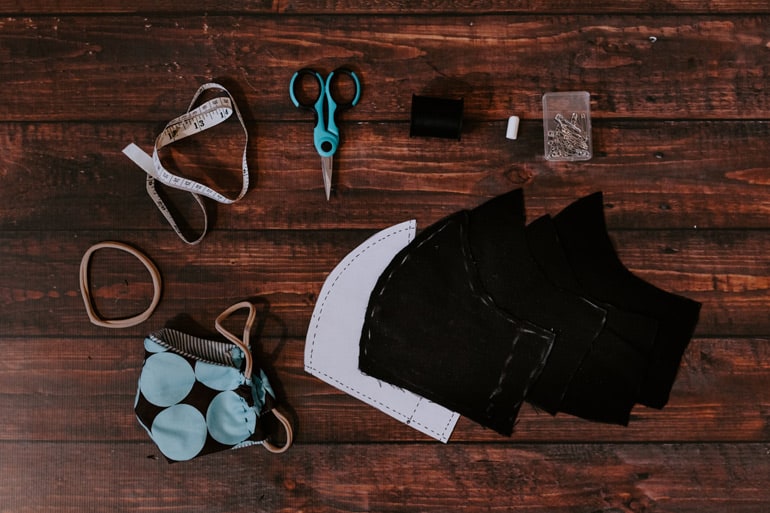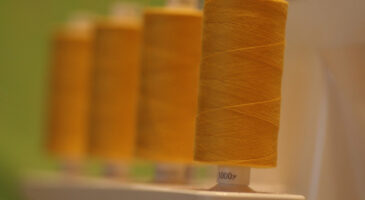Fabrics come in different types, designs, patterns, and textures and it becomes difficult for some people to decide which is better. One such factor that distinguishes fabrics is a nap. At first, people think that it is something to do with sleeping but the fact is, it is a lot more than that. With and without nap fabrics differ in many aspects while the major ones include their texture, design, look, touch, feel, and shine.
The thing is that these fabrics not only differ in the above-mentioned factors but there is a lot more to this. The cutting pattern and making pieces will vary with and without nap fabric and this is what we will discuss in this article.

Just continue reading this article as we will first talk about some fabrics and determine whether they have naps or not. We also give some reasons why one fabric is better than the other. So, just dive into this useful batch of information.
What does with nap or without a nap mean in sewing?
The fabric “with nap” means that you can only cut different pieces of pattern in the same direction.
The fabric “without nap” means that you can cut the fabric in any direction and from any parts you want without worrying about its patterns or design. However, you will always have to follow the grainline of both kinds of fabric.
In simple words, we can say that fabric has the same pattern and looks the same no matter how you move or turn it.
On the other hand, a fabric that gives a different look and feels varying textures while moving is considered a fabric with nap. The fabric doesn’t need to look completely different because this difference can be extremely slight as well.
What is fabric nap loss?
As its name suggests the term “nap loss” refers to the condition where the fabric starts to lose its nap. Nap loss usually happens on fabric areas that are rubbed too frequently such as elbows, lapels, seats, pockets, buttonholes, collars, knees, etc.
When pushed and rubbed a lot, the part of the fabric starts to lose its fibers and the texture begins to look flat which gives an odd look and ruins the overall attraction of clothes as well.
What kind of fabric has a nap?
Mostly the fabrics that come with a pile or weave in a single direction have a nap. Most fabrics that come with a nap have a soft texture and don’t give a flat feel when you move your fingers through them.
The nap is included in a fabric when it is being woven so you just cannot take it out in case you don’t want to fall in the mess of cutting in the same direction.
Does the brushed cotton fabric have a nap?
Yes, brushed cotton fibers always run in the same direction because it is in their nature. Brushed cotton is different from 100% cotton and it can be determined easily. If we talk about simple cotton fabric, it doesn’t have a nap at all and you can cut it in any direction you find suitable.
Does fleece fabric have a nap?
Yes, fleece fabric does have a nap and it can easily be tested as well. When you move your hand on fleece fabric, it will give you the exact feel that you get by moving your hand on a cat’s fur. The fur of fleece will go down in one direction but if you move it in the opposite direction, the fur will stand up which is a clear indication of a nap.
Does the polyester fabric have a nap?
Polyester doesn’t usually have a nap but one of its types does have a nap, known as polyester fleece. Different techniques and procedures are used to add an extra layer of the weave which results in a shear nap on the fabric’s surface.
Does linen fabric have a nap?
No, linen fabric is soft and smooth but doesn’t have a nap at all. When you look at it, it may give you different shades of colors while moving but if you move your fingers, you will only feel a single layer of weave without any detail pile or fur on it.
Does denim have a nap?
Yes, brushed denim has a nap but if we talk about most denim used regularly by people, they don’t have any naps on the surface. So, we can say that even if the main category of fabric doesn’t have a nap, some of its types may come up with it.
Does velvet fabric have a nap?
Velvet is probably the biggest name when it comes to fabric with nap. It has a pile which is a clear indication that this particular fabric comes with a nap. Moving your hands in velvet fabric will give you a feel like you are moving your hands on some kind of fur which looks shiny and gives different shades when moved.
Does the satin fabric have a nap?
Yes, satin also has a nap along with a unique shine. You may not be able to notice the nap at first glance but when you focus or start cutting fabric into different pieces, you will realize that fabric does have a nap, and cutting in different directions is bringing varying pieces.
Does flannel have a nap?
Yes, flannel is a brushed fabric which makes it soft while bringing a little bit of nap as well. Depending upon the type of fabric and how it is woven, some flannel fabrics have a nap on one side while others have a nap on both sides as well.
What is nap fabric used for?
The main reason behind using nap fabric is that it gives an enhanced shine and makes your dress look more attractive.
The texture feels soft and gives a cozy look while you wear it. Nap fabric can be used for various sewing activities, however, some of the most common uses include:
- Clothes
- Upholstery
- Wall hangings
- Dresses
- Eveningwear
- Bathrobes
- Bedding
- Hats
- Shoes
- Bags
- Ear warmers
- Vests
- Coats
- Gloves
- Scarves
- Jackets
- Throw blankets
What kind of fabric doesn’t have a nap?
Apart from some fabrics having a pile or weave, all other fabrics don’t have a nap. A fabric without having a nap will look flat and doesn’t feel too soft to the touch. You will feel like moving your fingers on a flat surface without experiencing any fur-like feel. Linen, cotton, silk, etc.
How to lay out a fabric with a nap?
Laying out fabric with a nap is a bit tricky because if you make a mistake, it may take away all the beauty, attractiveness, and perfect look from your dress.
This is because if you join pieces together with different patterns and designs, it will look like you have just stitched different patches without any proper design.
Below are some simple but useful tips that can be valuable for you while cutting fabric with a nap.
- Lay the fabric flat on an even surface.
- Analyze the nap thoroughly and see which areas should be cut for different parts of the clothes.
- Look at the grainline and nap because it should be aligned while cutting.
- Cut the fabric in the same direction for all pieces of clothes.
- It is better to buy more fabric because you may not be able to cut the fabric just as you want and may need to waste some as well.
Which fabric is better, with a nap or without a nap?
It depends on the requirements of your sewing project. If you are making gloves, bath robes, or a wedding dress, you may go for a fabric with a nap but if you want to make a dress or shirt that you can wear while going to the office or a formal event, a fabric without a nap is a better option.
Also, fabric without a nap is better as you don’t have to waste time on determining and cutting fabric in one direction which wastes a lot of fabric as well.
FAQs
Is fabric with a nap not durable?
Nap fabrics are quite durable and live on for years but as they have an additional weave or pile, they may be pressed or lost over time. This will make the edges and rubbed parts of your clothes dull.
This is the reason that nap fabric is recommended to be used if they are worn once in a while like bathrobes, wedding dresses, hats, etc.



